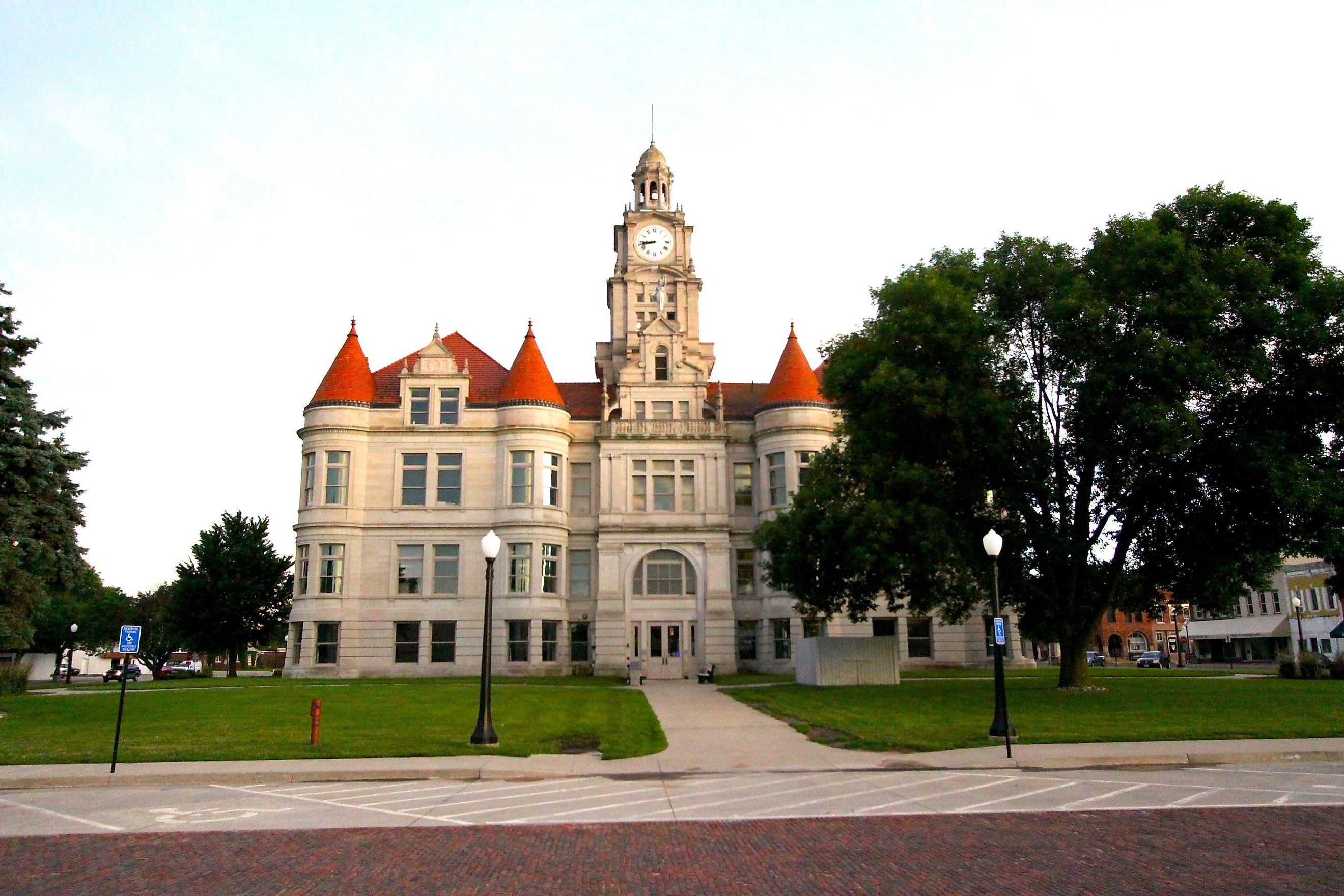
These Small Towns In Iowa Have The Best Historic Districts
The state of Iowa is the 29th to be admitted into the Union, and its heritage is highly valued by its residents. The name "Iowa" comes from an indigenous American Indian tribe of the same name. When people want to visit the state, they usually turn to larger cities like Des Moines or Davenport, but there are plenty of attractions and places to visit outside of them. They can be found in the state's smaller towns, which are full of history and are more tight-knit, including over a hundred historical districts dotted throughout them. Each such district has a collection of buildings and structures, representing the architecture, industry, and culture that serves as a legacy of the state's eventful past.
Adel
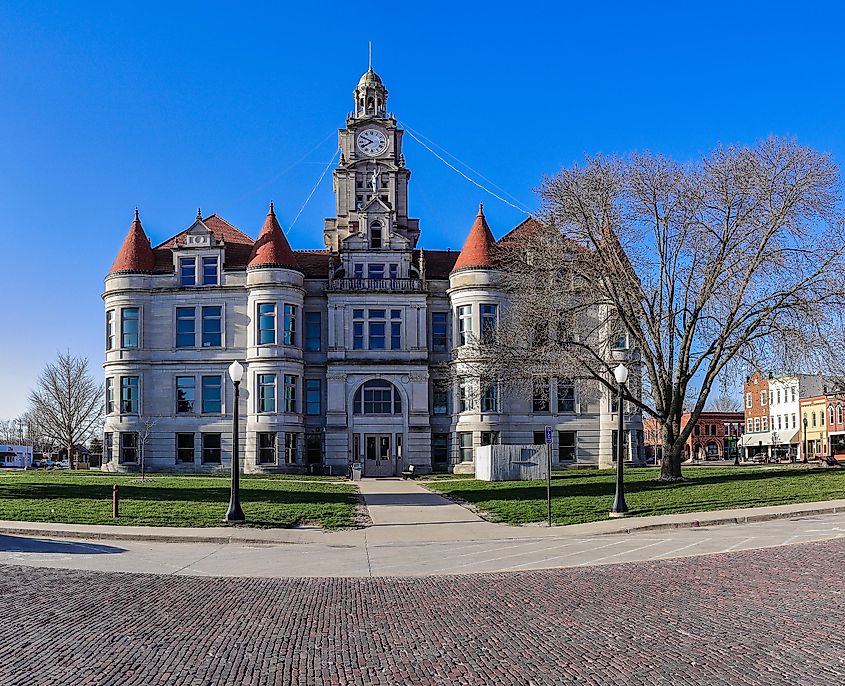
The town of Adel was originally called Penoach and is situated on the Raccoon River in Dallas County. Its name would change two years after its founding, in 1849. Adel's Public Square Historic District was formed around the Dallas County Courthouse, which was built in 1902. In it, there are over 30 buildings and structures still in use today, including many commercial buildings, along with offices and automotive businesses. There are even hatcheries throughout the district. There's a two-story museum on Main Street called the Adel Historical Museum, which used to act as a schoolhouse. The museum has artifacts from Adel's history dating back to the 1800s. Many buildings are made of brick, which was abundant during a lot of the 19th-century constructions. Adel's Historic District is often called "The Square" for short.
Greenfield
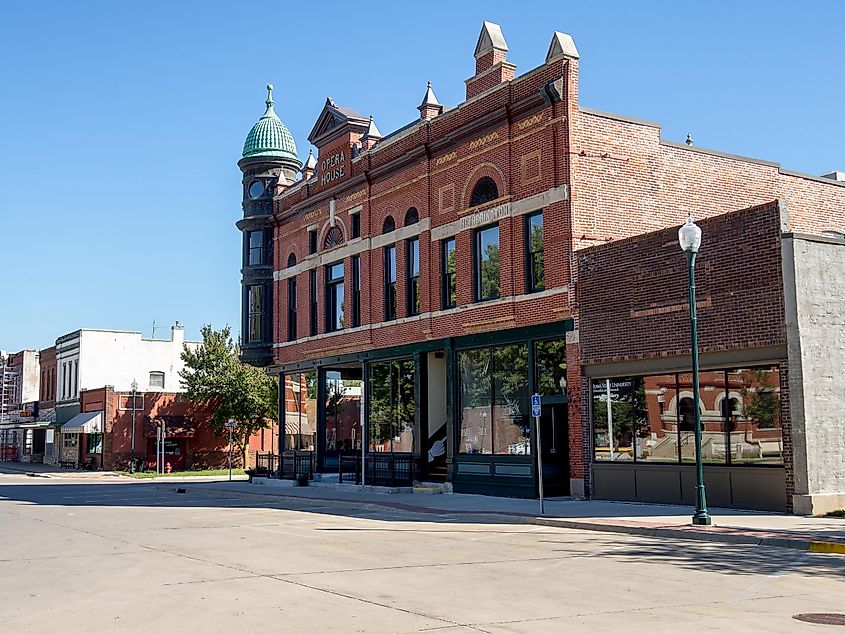
Greenfield is a small town in Adair County, with only around two thousand residents as of 2020. Their economy is somewhat focused on historical preservation, with people being awarded for their efforts to push it forward and preserve history. The Greenfield Public Square Historic District lies in the central business district, with many one-story and two-story brick structures that still stand today. Many of these buildings are for commercial purposes, but there are a few other purposes for them, including government buildings, the Warren Opera House Block and Hetherington Block, the Hotel Greenfield, and the Free Press building. There's a site called the Adair County Heritage Museum Complex, which, in a five-acre display, shows the history of not only Greenfield but all of Adair County as well. Greenfield's motto is "There's Nothing Like it".
Lisbon
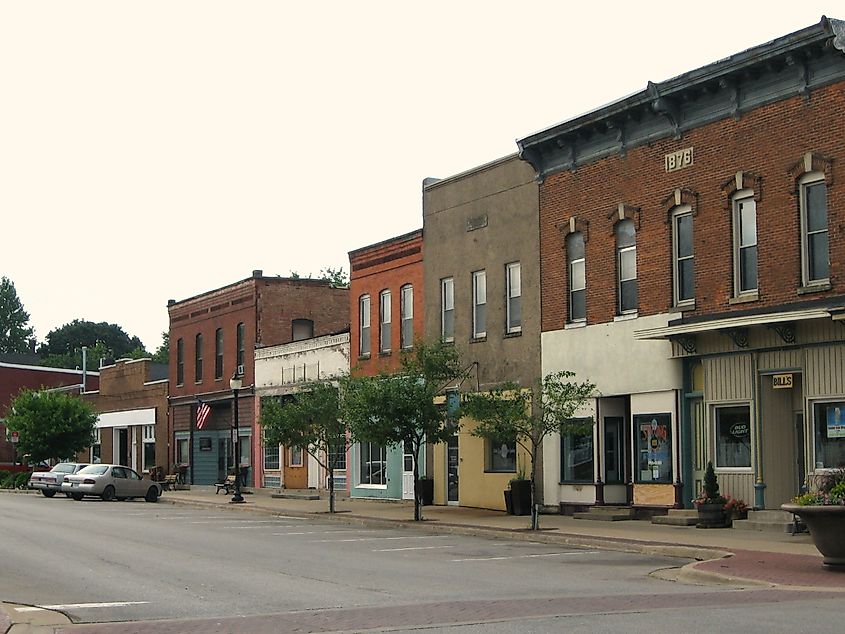
The first settlers of Lisbon arrived sometime in the mid-1830s. It's a small town in Linn County, with less than 2500 residents as of 2020, with the first settlers being German immigrants. In 1859, business and commerce increased with the construction of a railroad through the town by the Chicago Northwestern Railroad. The town was incorporated later in 1875, after the small boom. Progress slowed during the First World War and wouldn't pick up again until the 1960s. The Lisbon Main Street Historic District is a relatively new addition (by name only), with it being listed on the National Register of Historic Places in 2019. It features buildings constructed mostly between 1875 and 1899. The Lisbon Library is the oldest building in the district; with it starting off as a general store in 1875. There are also several markers throughout the town, talking about its history from the 19th century onwards.
Bonaparte

Bonaparte in Van Buren County, with an area of less than half a square mile, houses a population of only 359 as of 2020. Its size doesn't mean it's historically insignificant, though. Bonaparte was established in 1837, with its surveyor, William Meek, giving it the name in 1841. Another township was established called Napoleon but was never developed. Bonaparte has two different historical districts: The Bonaparte Historic Riverfront and the Bonaparte Pottery Archeological District. Riverfront consists of industrial and commercial buildings used throughout Bonaparte's history, along with three buildings related to William Meek's family, who helped develop the town. These buildings are the pants factory, the woolen mill, and the flour mill, all made in the 19th century. The Archeological District consists of kilns and industrial buildings used in the mid to late 1800s.
LeClaire
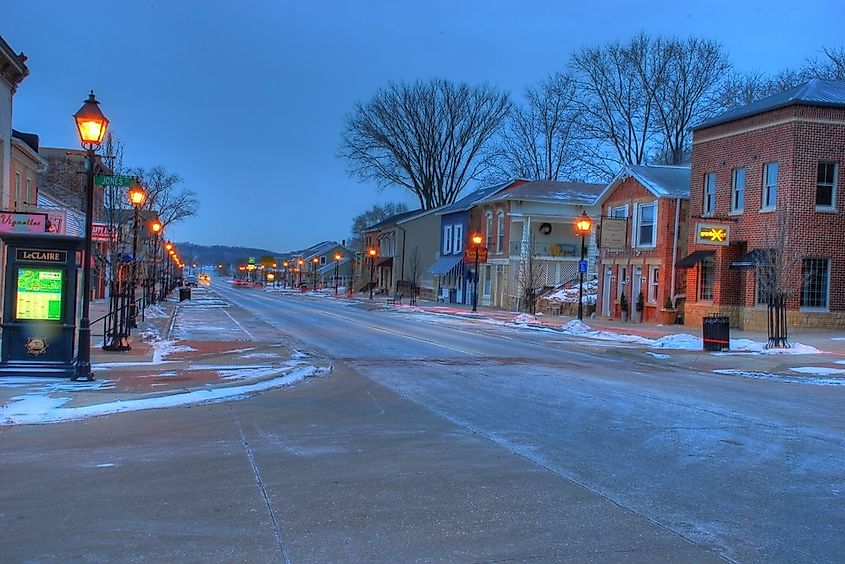
Located in Scott County, LeClaire was settled by European Americans in the early 1830s. The famous showman William Frederick Cody, known as Buffalo Bill, was born in LeClaire, with The Buffalo Bill Museum in the town displaying memorabilia from his shows. The Cody Road Historic District honors his name with over 60 structures, including residential and commercial buildings. Boutiques, gift shops, and eateries dot the district, along with several different historic sites. A lot of the architecture was built in the mid to late 19th century, with many brick structures still existing. Many riverboat pilots lived in LeClaire, as it is on the Mississippi River. Several of their houses still stand, like the Jacob Suiter House. LeClaire is also home to the History Channel reality television show American Pickers, with the antique store featured in the show located on the riverfront.
Kimballton
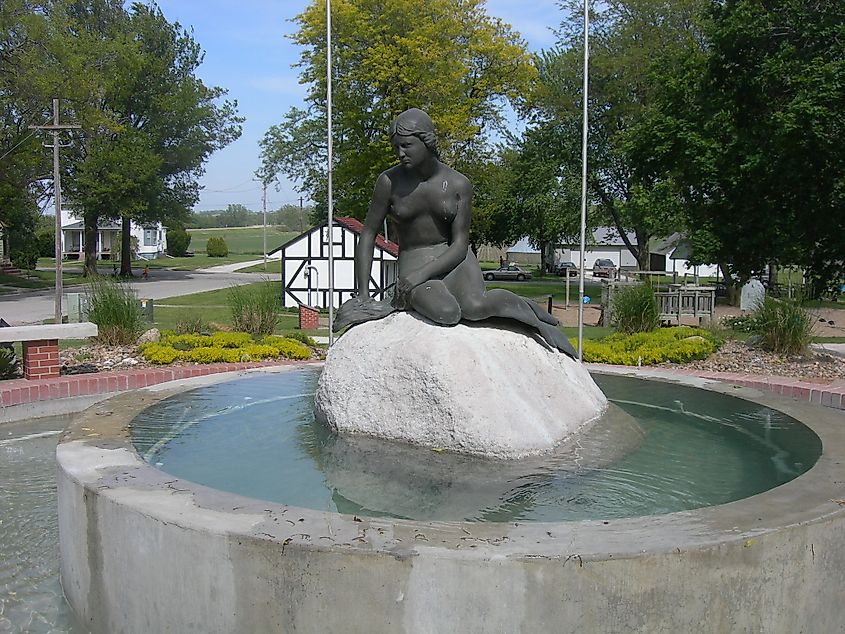
Kimballton only has a little more than 300 residents and was founded when a post office was opened at the town's location before being established a few years later in 1888. What makes Kimballton special is its Danish heritage. Danish immigrants were integral to the towns forming, with a lot of traditions still sticking with residents today, like folk dancing. The town has a recognized historic area called the Kimballton Commercial District, which is mainly masonry structures. One of the structures is called the Bennedsen, Boldt, and Hansen Building, which was built in 1913 by Danish craftsmen. It's served as a local museum since 1984, garnering the name "GeneralStore Museum." The name Kimballton comes from a railroad worker named Edward Kimball.
Hampton
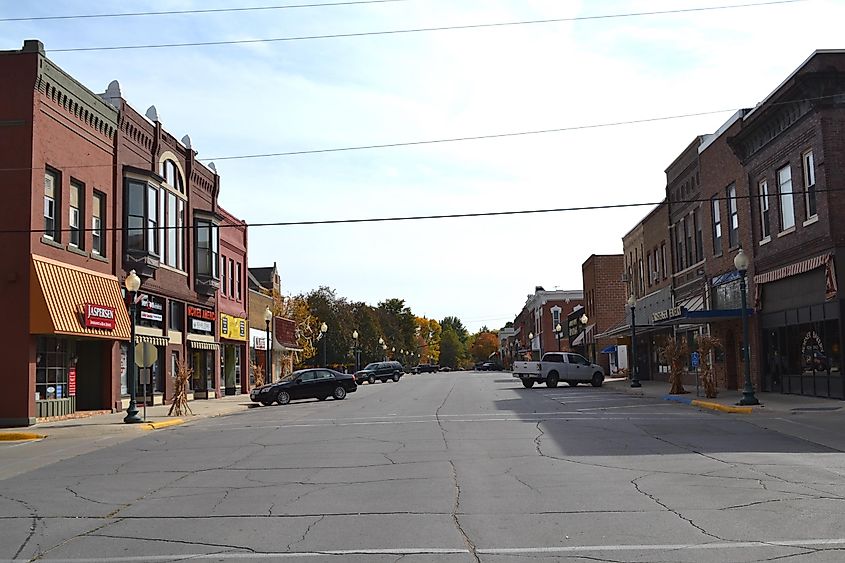
In Franklin County, Hampton houses more than four thousand people. Hampton happens to be where most of the historical locations are in Franklin, with a historical site called the Hampton Historical District. Most of it is still intact, serving as an example of Victorian-era Midwestern architecture. Some of the historic buildings include the Franklin County Courthouse, the United Methodist Church, and the Franklin County G. A. R. Soldiers' Memorial Hall, which honors fallen Civil War soldiers. The Windsor Theater is also a historic site, which some residents claim to be haunted. Hampton is next to two highways, Iowa Highway 3 and Route 65. Along with the Hampton Municipal Airport, there are a few ways to get to Hampton by both land and air.
Chariton
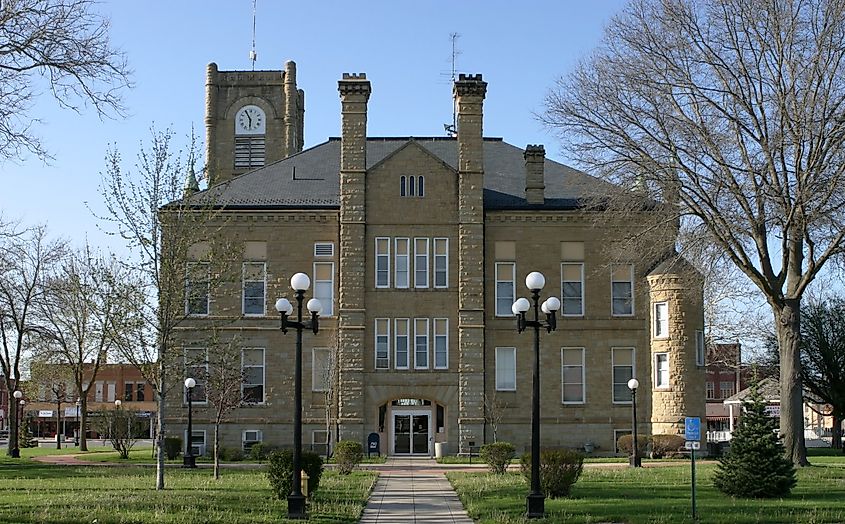
Chariton gets its name from a French trader and has a population of around 4,200 as of 2020. It's home to the Lucas County Courthouse Square Historic District. The titular Lucas County Courthouse was completed in 1894, with a clock tower still in operation today. The buildings in this district were built and/or remodeled over the course of almost a century, from 1867 to around 1963. They cover the town's central business area, with many commercial and public buildings, like the aforementioned Lucas County Courthouse. There's also the Chariton Public Library, built in 1904, along with the Chariton City Hall and Fire Station. The Hotel Charitone was built in 1923 and helped develop Chariton as a county seat. It's since been restored into several apartments.
It's no surprise that many Iowan residents want to preserve their state's rich history. No matter how big or small these districts, buildings and towns are, there's always going to be people willing to put forth both the money and effort to keep their traditions and heritage alive. Surprisingly, some of the smaller towns manage to have more historical importance and preservation than some of the cities throughout Iowa. This makes any part of Iowa wonderful to visit, as there's always something to see in any part of the state. No town is too small for historical preservation, and that's been proved true through over a century and a half of traditions still passed down today.











